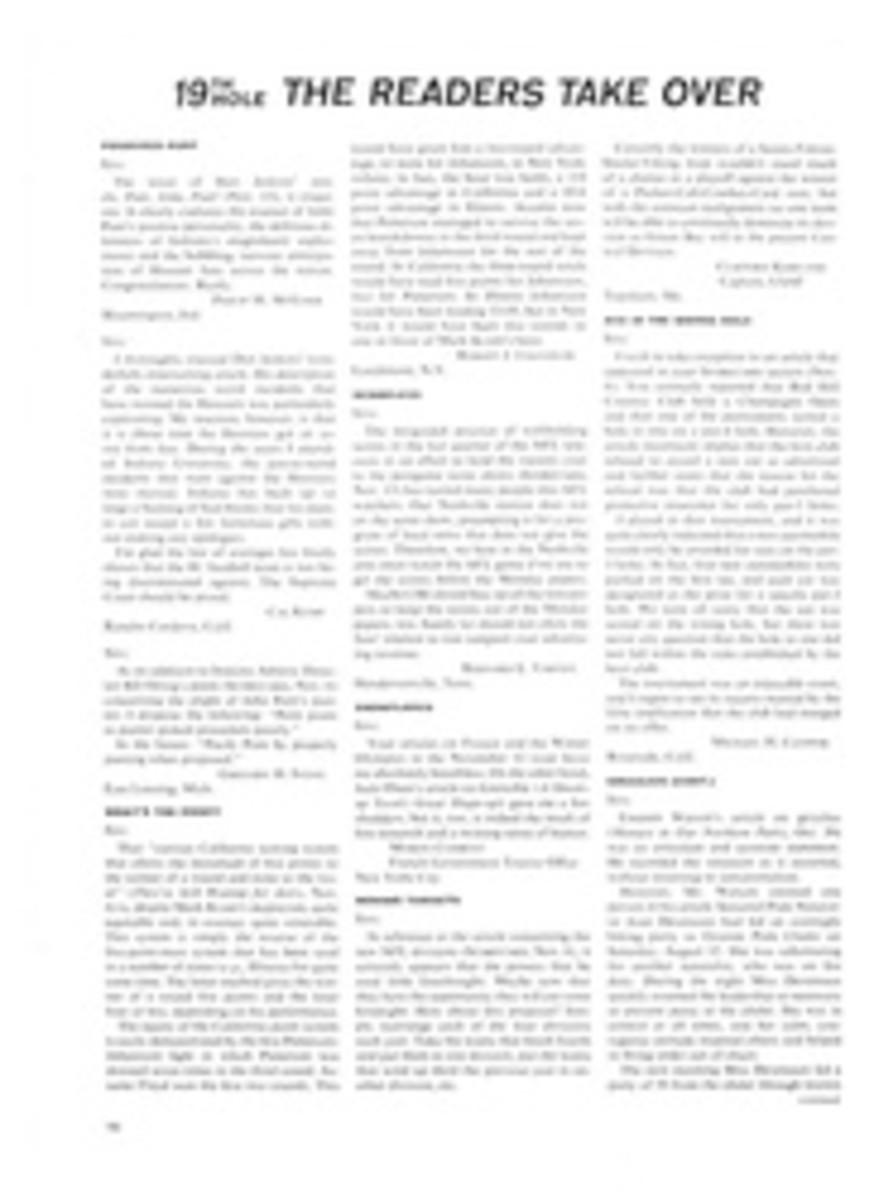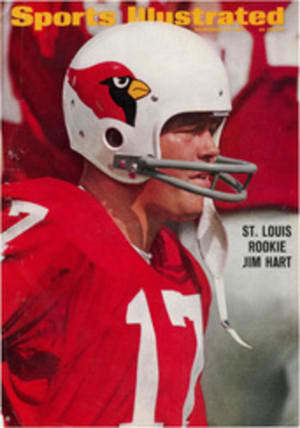
SHOOTING FOR THREE
Years from now," Laura appealed at the end of Tea and Sympathy, "when you talk about this, and you will—be kind." So it should be with the American Basketball Association's first year. Whatever happens—whether the league goes to a slow death or to national acclaim and parity with the NBA—when its historians or trivia experts recall its first moments, they should dispatch the first year swiftly and gently and then turn to talk only of Les Selvage and his original accomplishments. "Hey," they undoubtedly will say, "hey, remember Les Selvage?"
How not remember Les Selvage? Why, he was the first (and last?) of the great three-point basket shooters. Remember? Early in that first ABA season, back in 1967, he was making more three-pointers than any other team in the league. He was tossing in that red-white-and-blue ball from 25 feet and 30 feet as if he were making layups, and while he was averaging just 16 points a game for Anaheim, everybody was looking at the box scores and saying, "Hey, who is this Les Selvage, anyway?"
Selvage went from St. Louis to Kirksville (Mo.) State, where he broke all of Harry Gallatin's records. Then he moved to Los Angeles, where he played some AAU ball and with the Phi Beta Sigs of the Interfraternity Negro League. He worked as a shipping clerk at Douglas Aircraft, got married and had two sons. The Anaheim Amigos found him throwing in the long ones in the Interfraternity League and signed him up straightaway. Selvage says he is shooting the same as ever, that he has always taken long shots as a matter of course. It was just that before they never counted more than two points apiece. He also gets ample opportunity to employ his unique talent because the three-pointer has turned out to be a generally bad risk for most other players, except as a desperate come-from-behind measure. The Amigos, with an awful early road schedule, are usually coming from behind. Some times it turns out sí, Amigo; more often, no bastante, Amigo. But either way Selvage has been getting the long shots, and for Anaheim, now 5-12, it has been mostly a season of three and sympathy.
The three-point basket is the most distinctive feature of the new league, and although it has pleased fans, it is not altogether popular with players and coaches. "If you've got someone in your offense like Selvage who can really hit a good percentage of them, fine," Coach Babe McCarthy of New Orleans says. "Otherwise it can only hurt you." Indeed, the three-pointers appear to be the curse of the losing classes. The good teams eschew them; the poor, in desperation, turn to them. Indiana has made only eight three-pointers and given up 34, but Indiana has the best won-lost record in the league.
The old American Basketball League introduced the three-point basket, but it had been talked about for years—perhaps initially by Howard Hobson, the eminent coach at Oregon and Yale in the 30s-50s. The ABA chose to follow the ABL formula. A basket counts three points if it is shot from behind an arc taped or painted on the floor 25 feet from the basket. The arc extends to a point three feet from the sidelines. From there, lines parallel to the sidelines are drawn to the baseline, so that a three-foot-wide corridor is formed down each side—and a shot made within this territory, only 22 feet from the hoop, counts for three, also. "It's a much easier shot from the corner," says Ben Warley, Selvage's teammate who leads the league's forwards in three-pointers. Selvage himself would prefer to work more out of the corners, too.
The shot from out front, beyond the arc, where Selvage reigns, is a step or two beyond the range of most guards. Practicing in the Oakland Arena last month—an arena both leagues use—Oscar Robertson asked about the arc on the floor and then tried a couple of 25-footers. "It's out of my range," he said, giving up quickly.
Selvage is hardly 6'1", much smaller than Oscar, with a build that is not prepossessing and a little-boy face. But he is strong enough to make the long jump shot. He has hit with 47 of 107 three-pointers (.439), while inside the arc he is only 36 for 111 (.324). "His wrists are so strong," Amigo Coach Al Brightman says, "I think maybe Les would make more shots in close if he would try banking the ball." When the Amigos come out for pregame practice, Selvage embarks immediately for his dominion out past the arc. He pops them in from out there while his teammates mill around in closer, trying their more prosaic shots. The scene is reminiscent of a pregame football warmup, with Selvage the field-goal specialist, blithely tuning his sensitive skills, quite apart from all the mundane shoulder-knocking.
A substantial part of the argument supporting the three-point basket is that even if a long shot is not taken, the threat brings the defenses out to protect against it, and thus the whole court is opened up. The defenses are beginning to pick up long-range threats like Selvage, but they have not been moved to the extent that advocates have envisioned. "Look," says one coach, "we figure the very best thing that can happen is for some team to hit a couple of those bombs early. Then they'll try them the rest of the game, while we're working for the good old percentage shot."
Wisely, just as it has shown a commendable desire to experiment, the ABA is going to review the value of all its innovations. This is consoling, for it should speed the departure of the red-white-and-blue ball, a garish eyesore that the players find too slick to handle. It appears to have no value save that of shock. Some ABA officials continue to defend the idea, maintaining that the ball is easier to see. Since no one has ever complained that a basketball is hard to follow, the argument is specious.
On the other hand, despite its obvious defects, the three-point basket at least deserves further trial—particularly since the fans do enjoy it. A modified three-point plan, long championed by Oakland Coach Bruce Hale, merits as much experimentation as the present method. Hale's proposal, which seems more logical, would bring the arc in to 22 feet, but it would also eliminate the corner corridors. "The idea, after all," Hale says, "is primarily to help the little man. If we permit the shot at the closer range—22 feet—we truly bring it into the game. At the same time, we take away the bonus shot from the forwards in the corners. I wanted this in college because I think it is good for the game. I want it in the ABA, even though it will hurt me here. Can you imagine how much Rick [Barry] will score next year if they have to guard him tight in the corners to prevent his getting a three-pointer?"
For its part, the NBA remains unmoved by any three-point ideas. The rulesmakers have never even considered it. Eddie Gottlieb, an NBA rules committeeman who has spearheaded many of the innovations that have, literally, saved the pro game, says. "What is it but an admission that you are dealing with inferior players who can't do anything but throw up long shots? Is length the only criterion for excellence? I would say that out of every 40 or 50 shots, at least 20 are more difficult than a simple long shot. If it is worth three points to make a standard long jump shot, well then, a twisting, driving hook, going full speed to take the pass, cutting between two big defenders—why, that must be worth six points. You encourage mediocrity when you give extra credit to this sort of thing."
In at least one respect the shot is an exciting treat—when it comes in the very last seconds and the team with the ball is three points down. Mel Nowell of New Jersey tied such a game last week against New Orleans with a 30-footer with three seconds to go. And then New Jersey won in the overtime.
The longest three-pointer so far was made on the previous night when Jerry Harkness of Indiana banked in a 92-foot throw at the buzzer to beat Dallas 119-118. This won Harkness a Sharpshooter's Medal from the Indianapolis Marine Reserves and broke what was probably the pro distance record, set by Bill Sharman in the 1957 NBA All-Star Game in Boston. Sharman, standing at the opponent's free-throw line, hurled a long lead pass to Bob Cousy, streaking downcourt. It was a little long, and it swished through the nets 80 feet away. The arena was struck dumb at the sight. In the lull Sharman turned casually to Dick Garmaker, who was guarding him. "Don't play much defense, do you, Dick?" he said. They don't make three-point baskets like they used to in the old days.
PHOTO
The ref puts up a hand as Les Selvage tries three-pointer. Both go up if it sinks.

